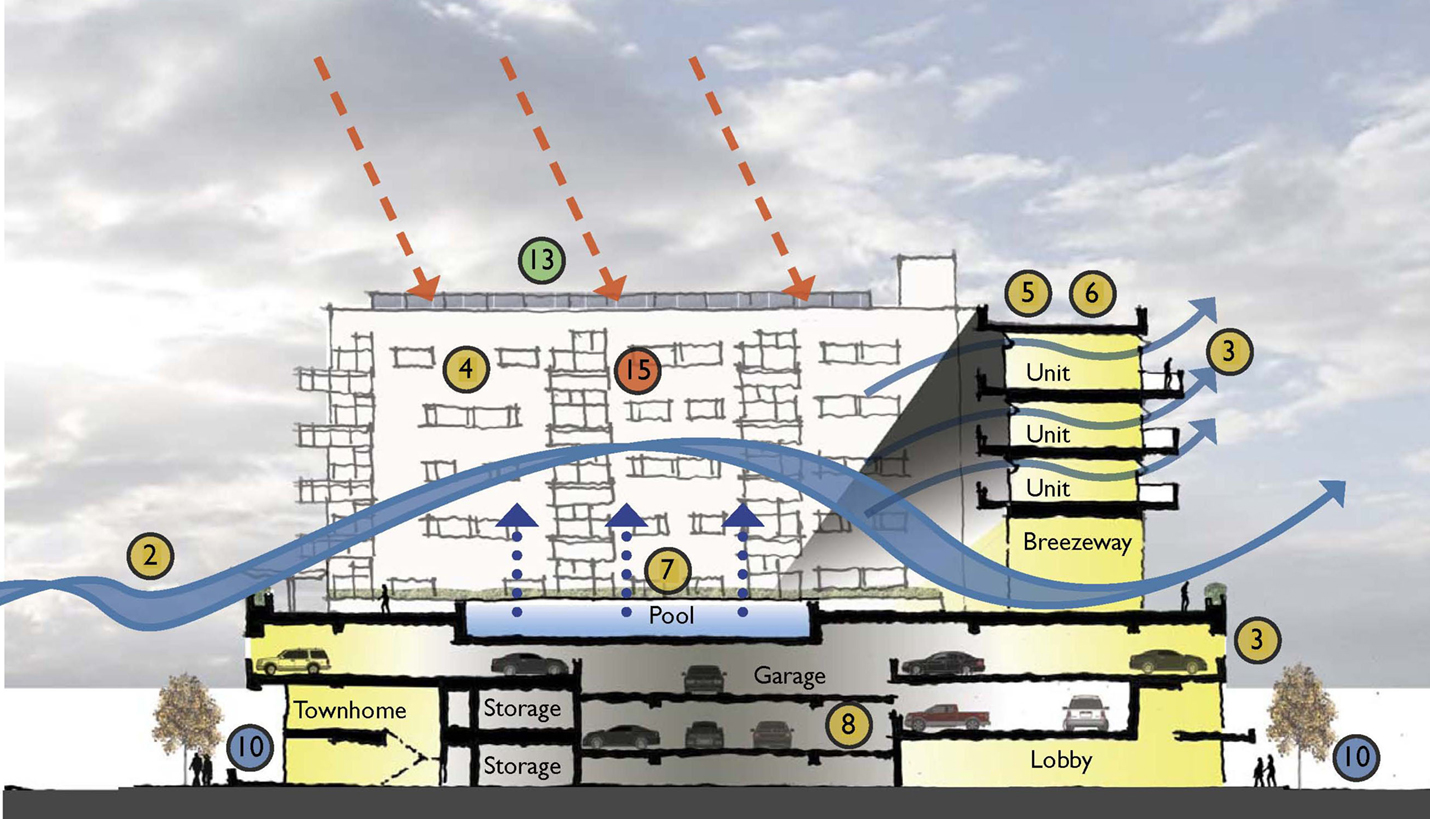

The Third Step in Creating a Net Zero Building: Identifying & Evaluating Energy Saving Strategies
At Page, we pride ourselves on being at the forefront of green architectural design, the implementation of sustainable practices, and we strive for environmental friendliness and cost effectiveness in every building we design. In a series of posts, Page Associate Principal and Senior Design Architect Peter Hoffmann details the methodical approach that Page used for a net zero-targeted multifamily project for the benefit of other designers also seeking to create an energy- and cost-efficient building.
The Third Step in Creating a Net Zero Building: Identifying & Evaluating Energy Saving Strategies
Once project goals are determined and an energy team has been assembled, the main objective will be to identify a mix of strategies that will result in meeting those goals, and then testing them with energy models, historical data, previous experience and any other methodology that can help assess the efficacy of the strategies being contemplated. These strategies, called Energy Efficiency Measures (EEMs) fall into two categories: energy consumption reduction measures and onsite energy generation measures.
Energy consumption reduction measures generally include architectural strategies related to the building envelope, orientation and other elements that can affect energy usage. Engineering strategies related to the various mechanical, electrical and plumbing systems as well as hybrids of both also are included. Energy generation strategies can include PV technologies, onsite power production technologies such as gas turbines and other, more exotic, strategies.
The process of identifying a master list of EEMs typically begins with a team brainstorming session. All team members contribute strategy recommendations based on their diverse experiences and new ideas arise from the interaction between team members. Most EEMs are ultimately based on the prior experiences and successes of the various team members.
The owner of a project we'll call Riverside Apartments brought their in-house sustainability director to the table armed with a long list of potential EEMs that he had identified in his research. The architects, engineers and energy modelers then added a further list of potential EEMs to the mix, and yet more were identified during the discussion. The resulting list was somewhat daunting and the next step was to pare it down, then organize it into systems that worked together where appropriate.
This is the third in a series of posts on designing NetZero, or low energy consumption, projects based on a white paper by Page Associate Principal Peter Hoffmann. To see previous posts, click the links on the right hand side of the page.
07/31/2018
People
Related Posts
- How Green Space Can Spur Economic Development
- Keeping Austin Green and Clean
- The Fifth Step in Creating a Net Zero Building: Putting It All Together
- New Student Facilities Open In Time for Fall Semester
- The Fourth Step in Creating a Net Zero Building: Evaluating Energy Measures
- The Second Step in Creating a Net Zero Building: Creating the Energy Team
- The First Step in Creating a Net Zero Building: Establishing An Energy Goal








